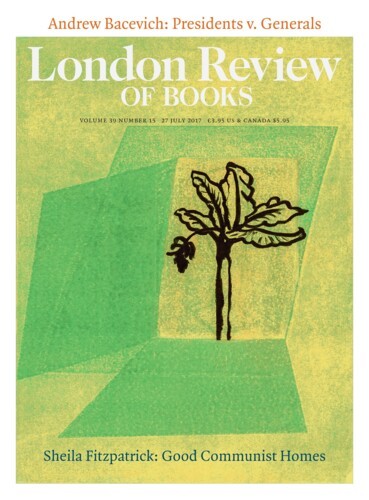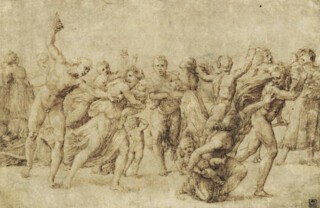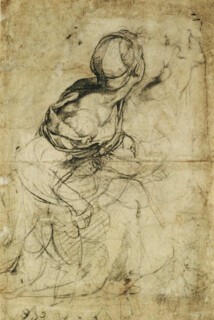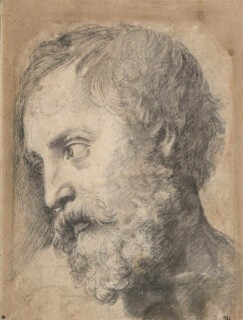Within a generation of Raphael’s death in 1520 it was widely recognised that his career, along with those of Leonardo da Vinci and Michelangelo, marked a turning point in the development of painting in Italy and, by implication, in the rest of Europe. As Pierre-Jean Mariette remarked in 1729, in the so-called Recueil Crozat, a lavish collection of reproductions of famous European paintings, this was ‘the time in which, as everyone knows, the fine arts emerged from their tombs’. And in 1745 Antoine-Joseph Dezallier D’Argenville defended his decision to exclude all early painters from his Abrégé de la vie des plus fameux peintres, a work soon translated into English and German, by pointing out that ‘Domenico Ghirlandaio and Pietro Perugino … have no merit other than having been the masters of Raphael and of Michelangelo.’ Such attitudes dominated the collection and display of paintings throughout most of Europe from the early part of the 16th century until the French Revolution. The works of the so-called primitives were not highly valued and were displayed, if at all, mainly as historical curiosities.
Although Raphael was younger than Leonardo and Michelangelo and his career was shorter, he was by far the most influential of the three, especially from the end of the 16th century. Leonardo left few paintings, and the most famous of them, the Last Supper in Milan, soon deteriorated, while Michelangelo was considered too wilful, eccentric and limited in his range to provide a suitable model for young artists. By contrast, large numbers of works by Raphael were readily accessible in Rome, the city in Europe that attracted the largest number of visiting artists and patrons. There they could see how he had painted historical narratives, mythologies, portraits, altarpieces and smaller devotional pictures. Such works set a standard for later artists, one that was all the more authoritative in that Raphael’s figure style seemed to be based on the most prestigious model, the art of classical antiquity. That Raphael himself largely invented this interpretation of ancient art, on the basis of a few statues, most of them very damaged, seems to have been generally overlooked. Because his art came to be seen as perfect, no one seems to have thought it could be in any way idiosyncratic.
When taste inevitably changed, as it did in the early decades of the 19th century, Raphael came to be esteemed more for his works from the period before his arrival in Rome, including those in which he was still working in an idiom close to Perugino. The somewhat sentimental piety of many of these pictures gave them an obvious appeal, whereas enthusiasm for the later works was more muted. But as taste changed again Raphael’s status became less secure. We distrust the notion of perfection in art because it inevitably excludes so much, and certainly don’t associate it with the expression of strong but conventional religious feeling or with the supposed assimilation of the principles of classical art. We also generally place a high premium on the personal involvement of the artist in every stage of the work, and the fact that Raphael increasingly employed assistants to realise his ideas, especially in his later years, has made this aspect of his work seem problematic. That Leonardo and Michelangelo were, or are thought to have been, driven and difficult is central to their modern appeal. By contrast, bestselling novels have never been written about Raphael, and the idea seems somehow incongruous.
Raphael, then, is more admired than loved, and everyone knows that visitors in their thousands visit the Vatican to see Michelangelo’s frescoes in the Sistine Chapel rather than those of Raphael in the Stanze. But from the 17th century to the 19th the balance was different. It is unlikely that the works of either artist will ever again achieve the authority they once possessed, but visitors to the current exhibition in Oxford (until 3 September) now have a rare opportunity not so much to understand why Raphael was once so influential but to appreciate his extraordinary gifts. The Ashmolean, thanks to the enthusiasm of Thomas Lawrence, possesses the largest and most representative collection of drawings by Raphael. These have been supplemented by important loans from other British and foreign collections to create an exhibition which is unlikely to be matched in Britain for several decades, not least because drawings can only be displayed on rare occasions and in carefully controlled lighting.
Drawings were always central to Raphael’s activity because he was trained in an environment in which there was, and always had been, a sharp distinction between the conception and execution of paintings. For both the main types of picture produced in Italy before his time – panel paintings, especially the earlier ones with gold backgrounds, and frescoes – it was necessary for the artist to establish the final design in detail before the application of any pigment. This placed a high premium on the skill of disegno, a term that covers both the activity of drawing and the wider notion of design. Later, as painters and others began to write in a limited way about what artists did, disegno was seen as the common feature of the different visual arts, and it was widely but not universally believed that whereas the conception of a work of art, in which drawings played an essential role, was an intellectual activity, the realisation was a purely manual process.
Whether and, if so, to what extent Raphael shared these ideas is impossible to say. But given his background it was inevitable that drawing played a fundamental role in the way that he worked. What can be seen very clearly in the exhibition is how he used drawing, and his technical mastery of the medium changed very dramatically in the twenty years or so of his career. In his earliest drawings he evidently shared the then standard idea that corrections should be kept to a minimum, and that if the artist was not satisfied he should start again, often elsewhere on the page. Equally conventional was his limited use of live models for the main elements of a figure pose, and the adoption of poses and physiognomic features strongly reminiscent of those favoured by his teacher Perugino. But a famous supposed self-portrait, the first exhibit in this show, already shows surprising assurance.
Raphael’s style and his approach to drawing was transformed by his period in Florence, from 1504 to 1508, when he had direct experience of the work of Leonardo and Michelangelo. From the latter he seems to have discovered the expressive potential of the heroic male nude, and from the former he learned the advantages of making extensive changes in drawings, especially pen sketches, enabling him to create compositions in which every element was precisely calculated to contribute to the overall effect. The results can be seen particularly well in a series of drawings of the Madonna and Child, sometimes with the infant St John, made in the preparation of some of his best-known pictures, in which the children are endowed with an agility and poise quite incongruous for their supposed age but perhaps justifiable on the grounds of their divine status.
It was in Rome, where Raphael arrived in 1508, that he applied the lessons of Florence on a much larger scale, in complicated compositions involving many adults interreacting, such as what is today his most famous work, the so-called School of Athens. The surviving drawings for his Roman frescoes show the enormous pains he took to organise his figures and develop their poses in an elaborate choreography, in which gestures and especially hands and glances served to relate the figures in complicated ways. Particularly revealing about Raphael’s working method and his ideals is a remarkable group of drawings for an engraving, The Massacre of the Innocents, in which all the protagonists interact in strangely balletic poses. The result is entirely artificial and seems wilfully eccentric, but at the time must have appeared an astonishing display of virtuosity.
One of the great strengths of the exhibition is the way it illustrates Raphael’s increasing mastery of and obvious pleasure in the medium of drawing during his years in Rome. This comes across most strongly in his works in red and black chalk, which have survived much better than those in the more fragile medium of metalpoint and those in pen, in which the original black ink has inevitably turned brown, creating a less incisive effect, very different from the original. There is a particularly marvellous black chalk drawing of a woman seen from the back, holding small children, done with apparent spontaneity and extraordinary control, in which her movement, the modelling of her shoulder and the contrasting texture of her dress are evoked with complete authority and extreme economy. Here, as in many of the later drawings, there is a more extensive use of a live model, although Raphael never seems to have accorded to life drawing the importance it acquired in artistic practice in Italy and elsewhere from the later 16th century. No drawing of the 15th century is remotely comparable to this, and it entirely negates the common idea of Raphael as an artist of laboured self-conscious perfectionism. The same could be said of a famous group of late drawings for his last major work, the Transfiguration in the Vatican. The altarpiece itself, in which the balance of the colours has irretrievably changed over the centuries, now seems excessively contrived, but the drawings for individual heads, which served as full-sized cartoons for the picture, are livelier and more vivid than the painted versions. This loss in quality between the drawing and the painting is characteristic of almost all Raphael’s later output, in which the contribution of assistants is often a factor.
Whether he himself would have recognised or have been troubled by this is impossible to say, since we can only speculate about his intentions as an artist, on the basis of what has survived. The direct experience of the artist’s hand and thought that drawings can give us seems to have had much less appeal to non-artists before the 20th century than it does today. Working drawings, which make up almost all the exhibition in Oxford, were usually preserved by those who made them and then acquired by other artists or bequeathed to them, and the few collectors of drawings seem to have favoured very highly finished ones, of the kind that Michelangelo, for example, gave away to a few favoured friends.
Send Letters To:
The Editor
London Review of Books,
28 Little Russell Street
London, WC1A 2HN
letters@lrb.co.uk
Please include name, address, and a telephone number.




